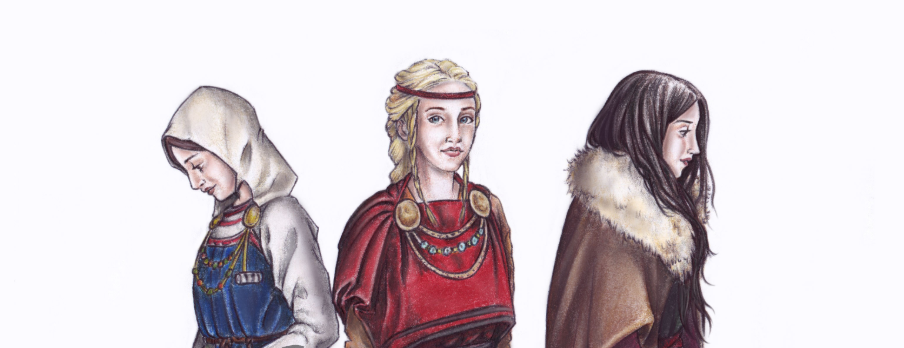Viking men: clothing, footwear, everyday life
Viking men have been portrayed as fearsome warriors, bold explorers, and tireless sailors. However, beyond the stereotype of the axe and helmet, their daily lives were complex and laden with symbolism.
I invite you to learn more about their clothing, footwear, occupations, and major gatherings and celebrations, as described in the material provided.
How did Viking men dress?
Viking men's clothing was practical but also reflected social status.
Not all men dressed the same: materials, colors and ornaments indicated wealth or position within the community.
Clothing was made primarily of wool and linen, fabrics that provided warmth and durability in extreme climates.

The main components of the Viking outfit were:
Tunics and trousers
The basic attire of Viking men included a long or short tunic (kyrtle) combined with tight trousers or breeches, held together by leather straps or cords.
In winter it was common to wear undershirts and double tunics to resist the cold.
The most common colors were blue, brown, green, gray or dark red, achieved with vegetable and mineral dyes.
Viking fashion, although simple, denoted both functionality and cultural identity.
Belts and capes
Men wore leather belts with metal buckles, useful for hanging knives, bags or keys.
For outdoor use, they wore woolen cloaks fastened with clasps, as well as waterproof fur cloaks or hoods when the weather required it.
These garments added distinction and reinforced the image of the Viking as a man prepared for any environment.
Viking men's footwear
Viking shoes were handcrafted from tanned leather and sewn using the turnshoe technique, which involved sewing them inside out and then turning them inside out.
Low models similar to moccasins were worn, while in winter they preferred boots lined with wool, felt or sheepskin.
Sometimes the footwear included metal engravings or rivets.
Wooden clogs were also used, which were practical in wet and marshy terrain.

Trades and daily life
Although the most widely held image is that of a warrior, most Viking men dedicated their lives to more peaceful occupations. They were farmers, growing barley and rye, as well as raising livestock. Others worked as fishermen and whalers, especially on the northern coasts.
There were also specialized artisans: blacksmiths, carpenters, tanners and jewelers, all indispensable to the local economy.
Viking sailors were expert builders and crew members of the famous longships, while traders extended trade routes from Ireland to Constantinople. The daily life of a Viking man was filled with hard work, but also with community and rituals that gave meaning to his existence.
Parties and community gatherings
Viking sociability was reflected in their celebrations and collective gatherings. Among these were the blót, ritual banquets in honor of the gods, where barley beer and mead were the mainstays.
Mead, fermented from honey, was considered a sacred drink, linked to poetry and power.
An important meeting was the thing, the assembly of free men in which laws, disputes, alliances and inheritances were discussed.
These meetings reinforced the importance of honor and demonstrated a surprisingly democratic character in Viking society.
Finally, Jól, the winter festival that gave rise to Nordic Christmas, brought families and communities together in oaths, rituals, and competitions, integrating the everyday with the spiritual.

Men and combat
Although not all Viking men were warriors, many participated in expeditions or raids in their youth.
Their most common weapons were swords, axes, spears and round shields.
Helmets were usually made of iron or reinforced leather, but never with horns. Chain mail was a luxury reserved for the wealthy.
Combat was not just about violence: it was also a path to honor, wealth, and social advancement.
The Viking man beyond the myth
The Viking man was much more than a legendary warrior. He was a farmer, fisherman, craftsman, merchant, and family man.
Their clothing, footwear, trades, celebrations, and beliefs reflect a life marked by the harshness of their environment, but also by solidarity, honor, and spiritual transcendence.
Understanding their everyday lives helps us understand how these men left an indelible mark on European history.
You'll find more products in the Viking collection at our Medieval Shop.









